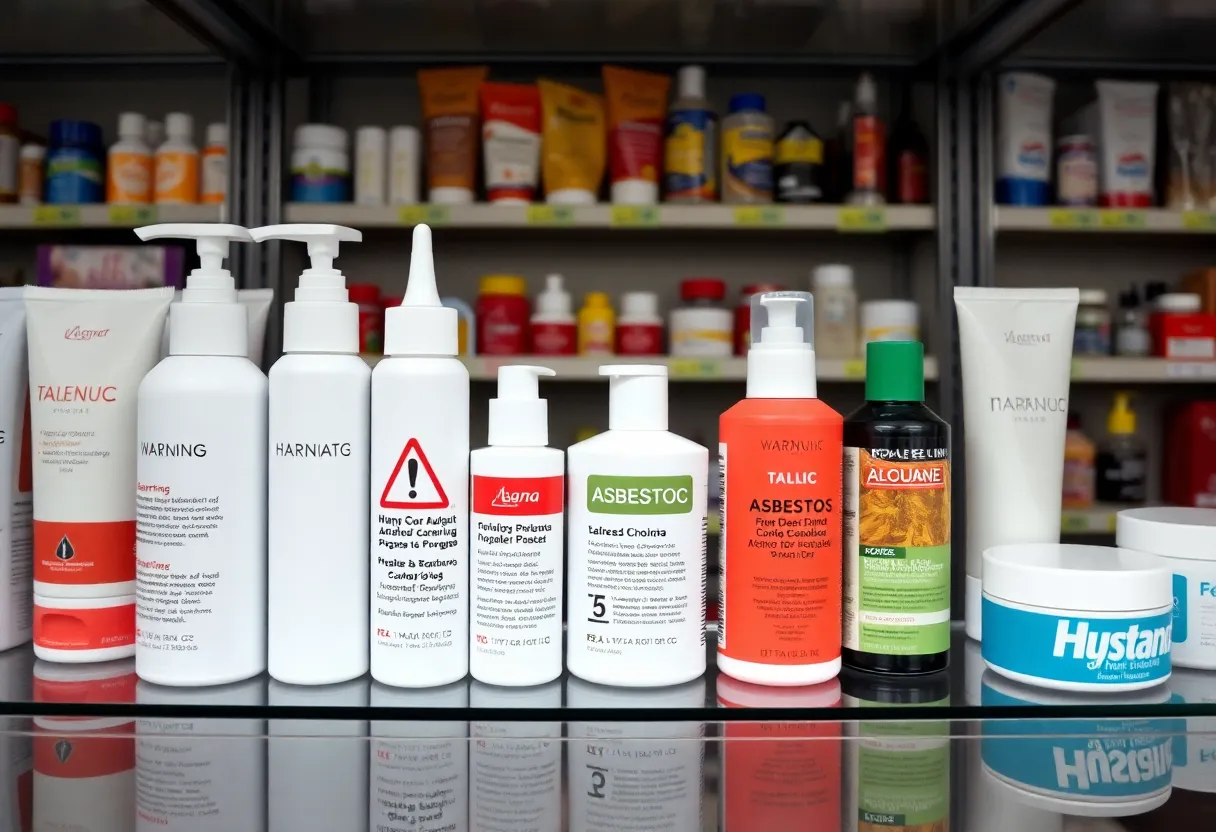News Summary
FDA Proposes Bold Move to Combat Asbestos in Talc-Containing Cosmetics
The U.S. Food and Drug Administration (FDA) has initiated a significant step in enhancing consumer safety by proposing a new rule addressing asbestos contamination in talc-based cosmetic products. This action aligns with the Modernization of Cosmetics Regulation Act of 2022 (MoCRA), aiming to shield consumers from the potentially carcinogenic threat posed by asbestos.
Proposed Rule Details
Titled “Testing Methods for Detecting and Identifying Asbestos in Talc-Containing Cosmetic Products,” the proposed rule sets forth strict requirements for manufacturers. It mandates the use of Polarized Light Microscopy (PLM) with dispersion staining and Transmission Electron Microscopy (TEM) as the standardized testing methods for detecting asbestos in talc. Presently, no FDA-mandated methods exist to verify the presence of asbestos in such products, raising pressing questions regarding consumer safety.
With talc prominently featured in cosmetics due to its properties for moisture absorption and texture enhancement, the risk of contamination is heightened, as talc often coexists within layers of minerals that include asbestos. This proposed rule signals a crucial move to mitigate such risks.
Compliance Requirements for Manufacturers
If finalized, manufacturers will be compelled to adhere to stringent testing and recordkeeping protocols. Each batch of talc used as an ingredient will need to undergo thorough testing, along with representative samples from finished cosmetic products. Furthermore, records of compliance, including testing results and certificates of analysis, must be maintained for a minimum of three years and made available to the FDA within one business day upon request.
Any detection of asbestos—regardless of amount—will render the product illegal for sale or distribution, as the FDA has yet to establish a definitive safe level for asbestos exposure. Non-compliance could lead to products being classified as adulterated under the Federal Food, Drug, and Cosmetic Act (FD&C Act), opening the door for regulatory actions and potential recalls.
If History Repeats, Consumer Safety Could Benefit
The FDA has been proactively testing talc-containing cosmetics for asbestos for years and has collaborated with federal partners striving to minimize consumer risk. In 2019, alarming reports indicated that asbestos was detected in 9 out of 52 tested talc-containing products. However, more recent testing efforts have shown promise; lab analyses of over 150 cosmetic samples since 2021 found no traces of asbestos.
The potential for fewer asbestos-related illnesses is a massive leap forward in consumer protection. The proposed regulations are seen as pivotal in combating a long-standing health crisis resulting from asbestos exposure, further accentuated by ongoing lawsuits against manufacturers highlighting their links to cancer.
The Road Ahead: Challenges and Opportunities
As the proposed rule enters a 90-day public commenting period upon publication in the Federal Register, manufacturers will need to weigh the challenges and opportunities that come with heightened compliance requirements under MoCRA. The cosmetic industry may be compelled to reevaluate their sourcing, particularly if they rely on multiple talc suppliers, as the need for consistent testing becomes imperative.
This regulatory proposal reflects an increasing trend towards greater enforcement authority for the FDA, ensuring cosmetic products meet higher safety standards. For consumers, the implications are clear: enhanced accountability and transparency in product safety could rekindle trust in cosmetics that may have been previously marred by safety concerns.
In conclusion, the FDA’s proposed rule represents a critical advancement in the regulatory landscape for cosmetics. With its focus on rigorous testing methods, the agency aims to significantly reduce the risk of asbestos exposure. With consumer health at the forefront, the beauty industry is poised for a significant transformation.
Deeper Dive: News & Info About This Topic
HERE Resources
FDA Takes Bold Steps to Tackle Asbestos in Talc-containing Cosmetics
FDA Proposes Life-Saving Rules to Tackle Asbestos in Cosmetics
New FDA Proposal Targets Asbestos in Talc-Containing Cosmetics
Asbestos Scandal Erupts at Long Beach’s Colorado Lagoon Construction Site
U.S. FDA Proposes Asbestos Testing for Talc in Cosmetics
Global Asbestos Crisis: Unmasking the Deadly Dangers
FDA Proposes Stricter Asbestos Testing for Talc-Containing Cosmetics
New Mesothelioma Lawsuit Filed Against Johnson & Johnson
Mesothelioma: Alabama’s Fight Against Asbestos Exposure
The Rising Tide of Pleural Diseases: An Alarmingly Growing Health Concern
Additional Resources
- JD Supra: FDA Proposes New Rule on Testing Talc
- Wikipedia: Asbestos
- AP News: Talc, Asbestos, Cancer, FDA
- Google Search: Talc cosmetics FDA
- CBS News: FDA on Asbestos in Talc Cosmetics
- Google Scholar: Talc asbestos testing
- Cosmetics Design: FDA Moves to Standardize Asbestos Testing
- Encyclopedia Britannica: Talc



















